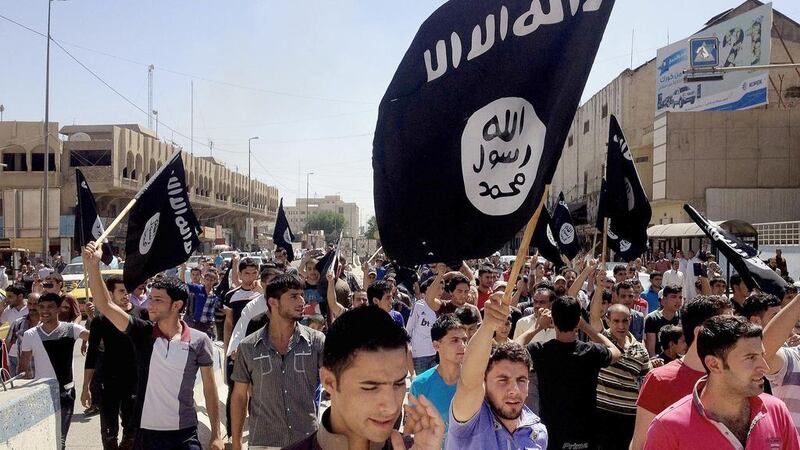The NGO Human Rights Watch has accused Kurdish security forces of killing dozens of alleged ISIL fighters held in their custody.
In a report issued on Friday the watchdog urged Iraqi and Kurdish authorities to hold members of the Asayish security forces from the West of the Tigris branch accountable for carrying out mass executions.
Thousands of Iraqis and foreigners had approached Kurdish forces near Sahil Al Maliha, a village 70km northwest of Mosul, for screening, before being detained in a local school and taken to a prison in Shilgia village, the report said.
The war with ISIL has led to the displacement of nearly six million Iraqis since January 2014. At the end of last year 2.6 million people remained internally displaced.
“We are extremely concerned that these executions took place to being with, and they seem to have gone largely unpunished,” Belkis Wille, senior Iraq researcher at Human Rights Watch told The National.
The Kurdistan Regional Government’s (KRG) criminal justice authorities must investigate “those implicated in these apparent war crimes up to the highest levels of responsibility,” she said.
Researchers analysed video and photographic evidence, including geotagged photos of bodies and satellite imagery showing an apparent mass grave, created sometime between July 5 and September 3 by bulldozer, and interviewed residents of a neighbouring village.
The watchdog spoke to a retired security force member, ‘Nadim’, who was in regular contact with the Asayish forces who told him they participated in the executions.
The Shilgia prison is the largest prison facility in the area and it is under the same area of command as the Zummar Asayish branch.
“The evidence suggests that Asayish security forces conducted mass executions of captured ISIS suspects night after night for a week, perhaps killing scores or even hundreds of male detainees,” said Lama Fakih, deputy Middle East director at Human Rights Watch.
The monitor located an apparent mass grave site where Asayish forces buried some of the bodies after execution, urging international forensic experts to conduct a detailed exhumation of the site before seasonal rains fill the reservoir obscuring the grave site.
The KRG denied that the executions took place and responded by stating that “the individuals at the school were considered internally displaced persons, not detainees, and were all transferred from there to camps.”
“Asayish forces, were fighting on a 71km front line with ISIS, as the group’s members attempted to escape to Syria,” Dindar Zebari, the KRG coordinator for International Advocacy said.
“Many ISIS members were killed along with Kurdish forces in the battle. And the corpses of the killed ISIS members were probably brought in one place to be buried,” he said in a statement.
‘Nadim’ and three other villagers said that the bodies were found in a solitary desert area, away from the fighting, and were shot in the head.
If the Kurdish authorities dispute the finding, they will need to produce proof that the men held at Sahil Al Maliha school are still alive, Ms Wille said.
“If they cannot prove that these men are still alive, they need to answer as to what happened to them, if they were killed, under whose orders, and why,” she said.






